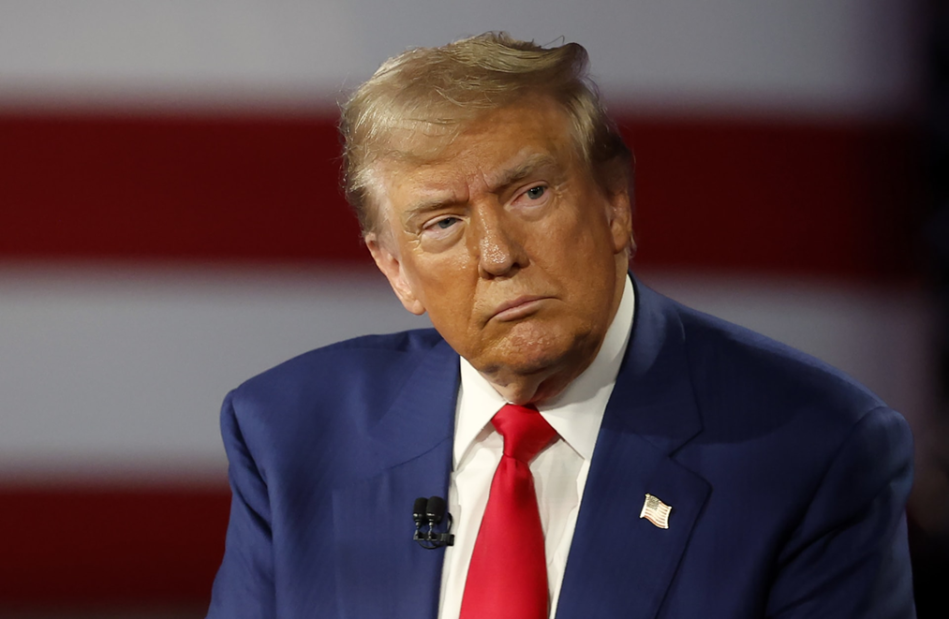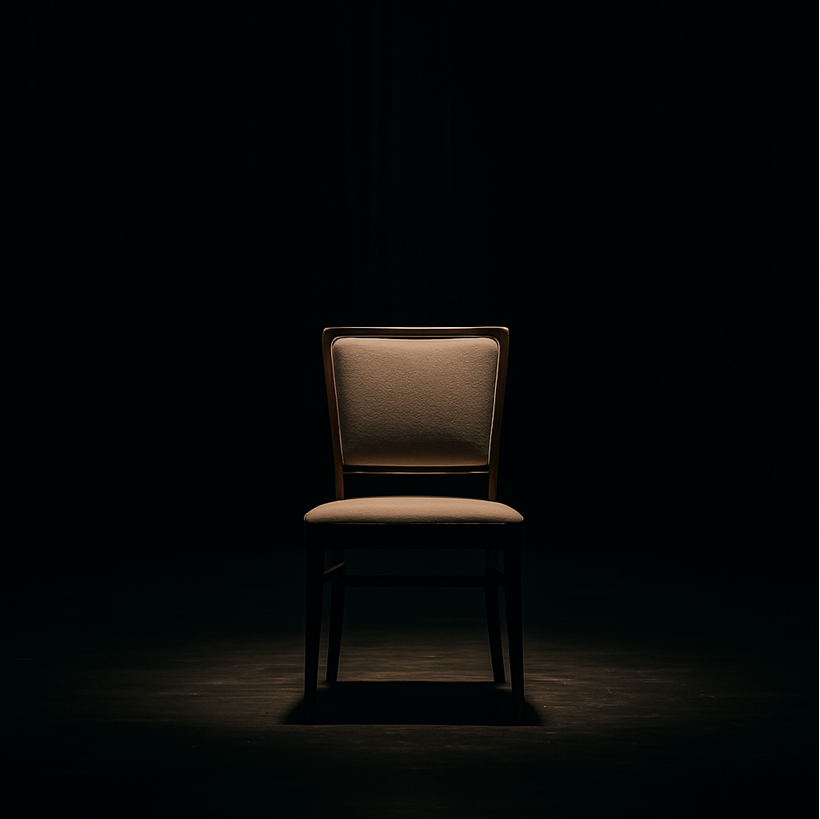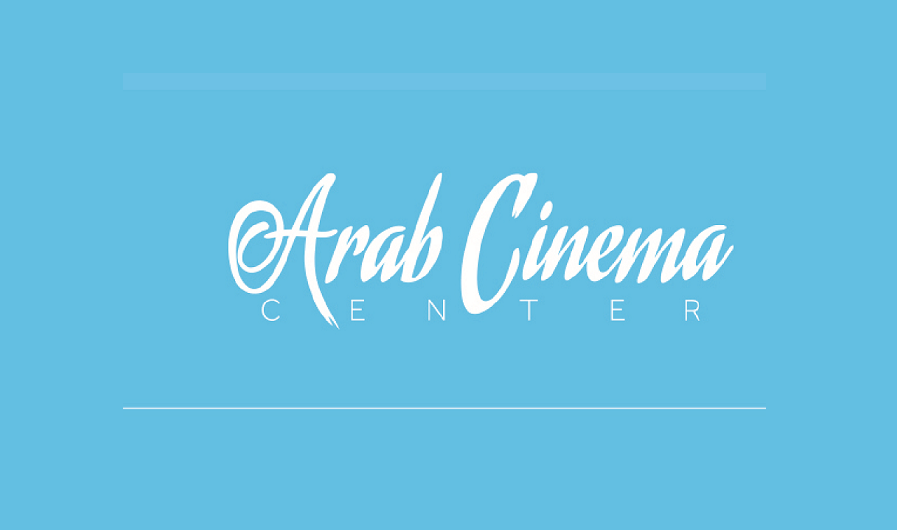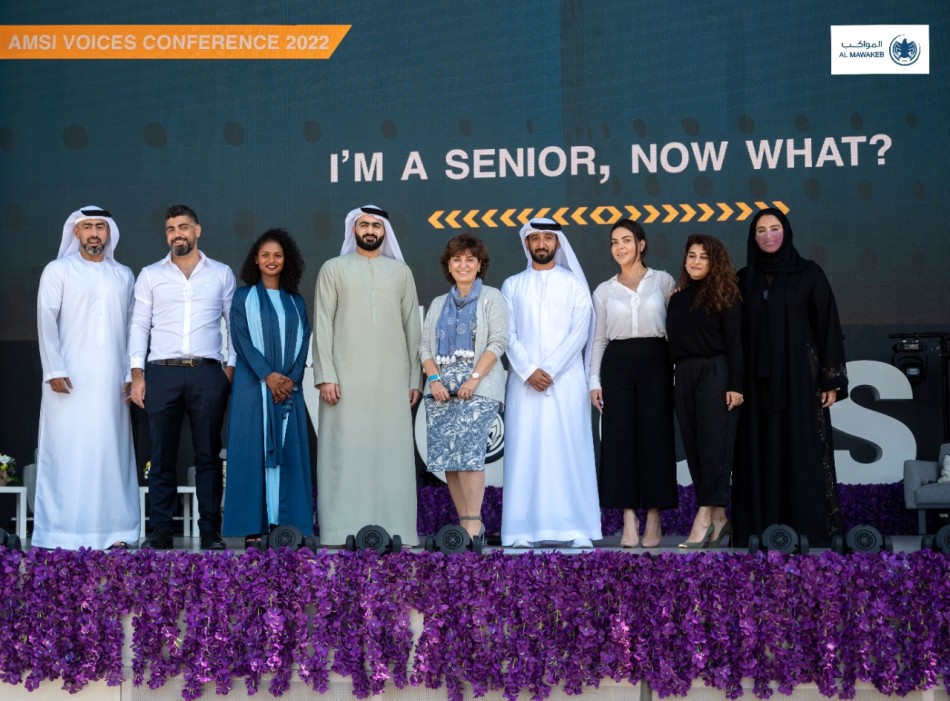“Riyadh” is a sustainable global capital by 2030
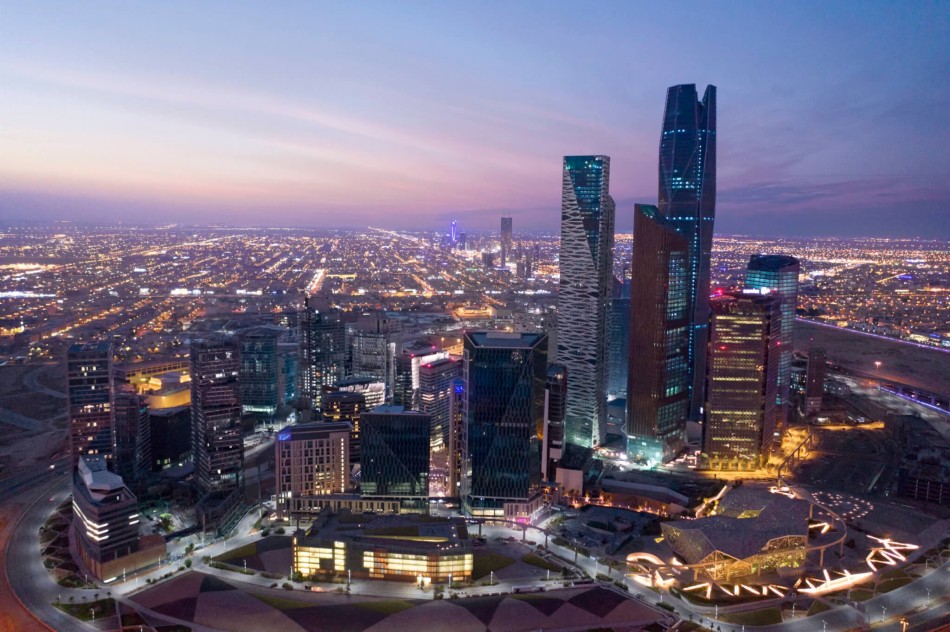
The Kingdom of Saudi Arabia does not measure its development by the number of years, as it does not follow the path of growth randomly, but rather based on strategic visions and well-thought-out plans, the aim of which is to transform the Kingdom into a global platform that attracts investors, businessmen and tourists as well, at the same time improving the quality of life for citizens and residents and upgrading services provided them to the highest level.
In a few years, the capital, Riyadh, will turn into a vibrant green and full of life, to enter the world through the wide door, with the implementation of a number of projects, the most important of which are the Green Riyadh Project, King Salman Park, the Sports Path, and Riyadh Art. These are comprehensive and integrated projects that take into account humans, stones and trees alike, and would change the image of the Kingdom's capital into a "sustainable global city", in line with its role as an economic, financial, tourist and entertainment center in the world.
There is no doubt that the Royal Commission for the City of Riyadh is responsible for supervising the development of the city and implementing the projects launched by the Custodian of the Two Holy Mosques, King Salman bin Abdulaziz, to advance the city, through the aforementioned projects, which were the subject of research and the focus of the attention of Saudi guests in the international crowd that It was held under the title, Riyadh Forum: The Sustainable City, from 12 to 13 November in the hall of the King Fahd National Library. The forum attracted about 60 international experts from major international academic and research institutions, who exchanged opinion, experience and advice on the impact that these giant qualitative projects in the sectors of the city of Riyadh will have on its diversity, in addition to issues related to sustainable urban development in the city of Riyadh, such as climate change and the preservation of the natural environment. Managing resources, projects, energy conservation and production, legal frameworks and initiatives to support positive change, promote culture and disseminate arts in society.
Thus, the forum shed light on the four major Riyadh projects, which are ambitious projects, which fall within the framework of a general project, and are expected to change the shape of the capital city and give it a global image. What are these projects and what they include?
Green Riyadh Project
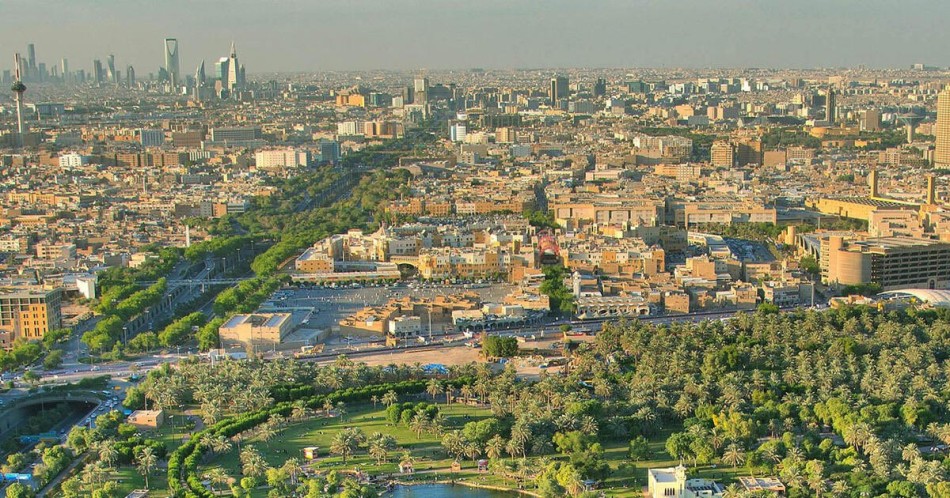
In its general form, the project aims to increase the percentage of green spaces in Riyadh from 1.5 percent at the present time, to 9 percent of the total area of the city, which is equivalent to 541 square kilometers, which is the area at the time of its completion. By estimation, this means raising the per capita share of green spaces from 1.7 square meters to 28 square meters, 16 times what it is today.
Work on this project will focus on the four main projects in addition to several other steps. In sum, the goal is to plant large areas of barren lands at a rate of 7.5 million trees throughout the city of Riyadh, with the afforestation process concentrated in 3330 neighborhood parks, 43 public parks, 9,000 mosques, 6,000 schools, 2,000 parking sites, and 1,670 government areas and facilities. And 390 health facilities, 64 universities and colleges, about 16,400 linear kilometers of roads and streets, 1,100 linear kilometers of valleys and their tributaries, and 175,000 vacant plots of land within the developed area. The process will be carried out using selected types of local trees that are suitable for the city of Riyadh. However, this afforestation process will not only give the city a green appearance, but will also contribute to the disposal of sewage water by treating it and using it to irrigate the wooded areas, and this is expected to raise the rate of consumption of this type of water from 90,000 cubic meters currently to more than million cubic meters per day, after the establishment of a new network of treated water.
The most important outcome of this project is to revitalize the economic cycle. It will also lead to the development of legislation related to urban controls in order to promote afforestation in public and private projects. As a result, the Kingdom will reap a set of important results at the level of the environment, economy and the Saudi citizen, as the project will reduce temperatures by 1.5 To two degrees Celsius in afforestation areas and reduce the temperature in areas of intensive afforestation between 8 to 15 degrees Celsius, and it should improve air quality by reducing carbon dioxide levels by rates ranging from 3 to 6%, increasing oxygen and moisture in the air and reducing the proportion of dust in it.
The project will be accompanied by awareness campaigns calling for a reduction in energy consumption to reach an average of 650 gigawatt-hours, by encouraging the principles of green buildings in the use of green roofs and walls.
And changing the aesthetic value of this project will have an economic value, as the Kingdom aims to achieve about 71 billion riyals in 2030, based on its role in reducing the cost of health care, in addition to reducing electricity consumption, rationalizing the use of potable water and reducing waste at this level. Replacing this water that is used for irrigation with treated water and raising the value of real estate. The project also unlocks new investment opportunities for the private sector in the fields of nurseries, horticulture, landscaping, design, landscaping and irrigation works. Therefore, the project achieves a number of the goals of the Kingdom's Vision 2030 by achieving environmental sustainability in the city, building a vibrant community that enjoys a healthy lifestyle and enhancing the economic efficiency of the city. It also contributes to achieving a number of the goals of the National Transformation Program, including increasing the per capita share of green spaces and national parks. It also contributes to achieving a number of goals of the Quality of Life Program by establishing open areas for social contact, practicing various sports, and increasing walking rates for individuals.
At the level of implementation, work is currently underway to complete the studies and designs work, and at the same time, the first steps have begun, with all stages of its implementation to be completed by 2030.
King Salman Park
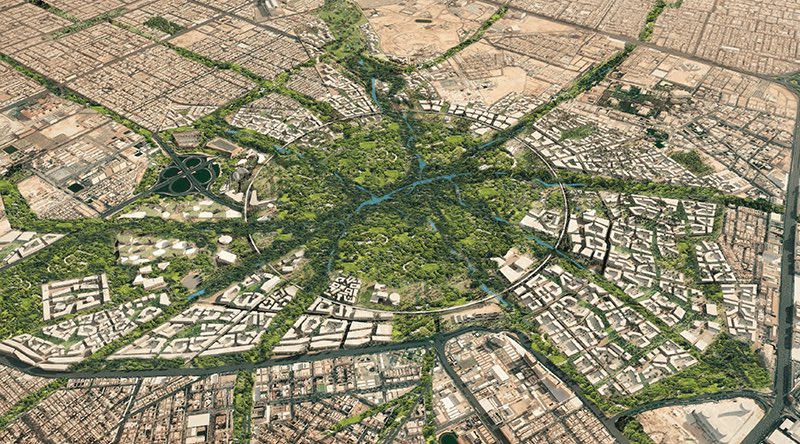
King Salman Park is distinguished as the largest city park in the world, with an area of 13.4 square kilometers, nearly four times the Central Park in New York. It contains green areas and open squares, a group of theaters and cinema complexes, art academies, sports stadiums, residential, hotel, office and commercial complexes, and entertainment cities.
The park includes the following environmental elements: green areas and open squares with an area of more than 9.3 million square meters, various gardens with an area of 400,000 square meters, a pedestrian circular path with a length of 7.2 km, a valley area on an area of 800,000 square meters, and various water elements on an area of 300,000 square metres.
In addition to the environmental elements, the Royal Art Complex will be established on an area of more than 400,000 square meters and will include the National Theater with a capacity of 2,500 seats, 5 indoor theaters of various sizes, in addition to an outdoor theater that can accommodate about 8,000 spectators, and a cinema complex that includes 3 halls, 4 art academies, and an educational center concerned with developing children's talents.
The park is not just a green space, but also includes cultural and sports facilities, including 7 various museums, namely, the Aviation Museum, the Astronomy and Space Museum, the Botanical Museum, the Science Museum, the Architecture Museum, the Virtual Reality Museum, and the celebration squares spread over an area of 40,000 square meters, and landmarks and artistic icons. . The park also contains several sports facilities, including the Royal Golf Course on an area of 850,000 square meters, a sports complex on an area of 50,000 square meters, virtual reality playgrounds, a parachute jump center, balloons, an equestrian center, and a running and cycling track.
Recreational facilities are not absent from the park, which will include a private play area on an area of 100,000 square meters, an area for water games on an area of 140,000 square meters, a family entertainment center in addition to a viewing bridge.
In addition to the above, a visitor center will be established, which will serve as an environmental and cultural introduction center that will extend over an area of 80,000 square meters, including interactive exhibits about the garden, multi-purpose halls, a meeting room, a dedicated area for tree and plant nurseries, open areas and yards, and food and beverage outlets.
To complete the picture, residential, office, commercial and hotel facilities will be established, consisting of residential building complexes with an area of 1.6 million square meters, providing 12 thousand various housing units and 16 hotels with a total area of 194,000 square meters providing 2,300 hotel units and commercial spaces for restaurants, cafes and the retail sector of more than 500,000 square meters, in addition to office building complexes with an area of 600,000 square meters.
In addition, the park includes public transportation facilities, as the park will be linked to 5 stations on the green line of the Riyadh train (King Abdulaziz Road axis), and will also be linked to 10 stations on the Riyadh bus network line with a dedicated BRT track. It will be using smart buggies, electric vehicles and bicycles. The implementation phases of this project are expected to be completed by 2024.
Riyadh Art Project
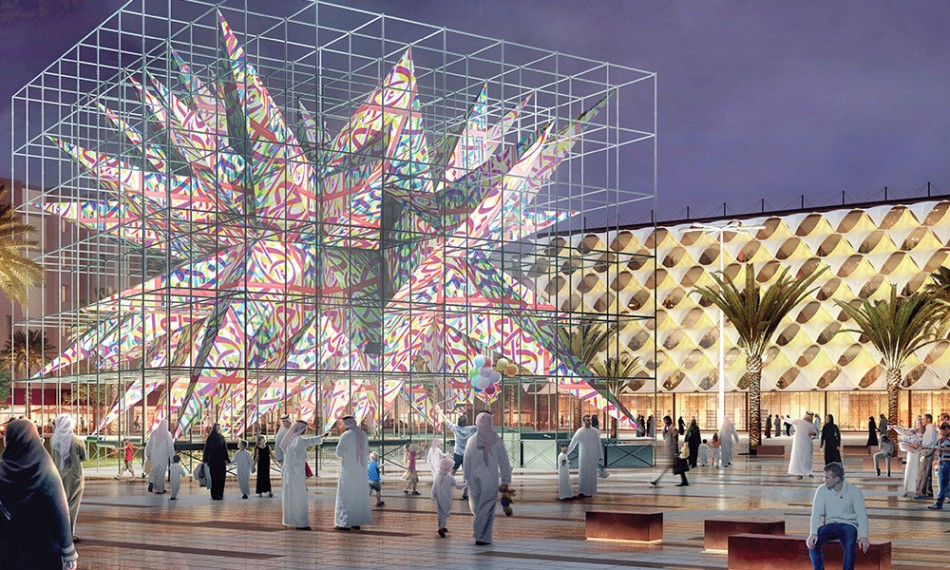
The "Riyadh Art" project is one of the most important projects that carries within it a remarkable cultural and artistic value. It aims to transform the city into an open art exhibition that blends the cultural heritage of the Kingdom of Saudi Arabia with contemporary, through a wide range of works and art landmarks throughout the city. Among the most important of these works are fun gardens that will lead to mixing art with garden games, art yards that will witness interaction between artists and visitors, in addition to international and local art paintings and models at intersections that will give the city an artistic form that surpasses many international cities, and city gates that will be implemented in forms bearing Special artistic value.
It can be said that art will extend to every space in Riyadh and even to bridges, valleys and public transport stations, and all for the sake of a basic message represented in launching new horizons for the creative movement in society, and providing a rare opportunity for artists to present their creativity to the public, and to enhance societal values, civilized interaction and knowledge exchange. And creative cooperation in the city.
In addition to the artistic and cultural value of this project, it is supposed to contribute to making Riyadh an incubator for artistic and creative works and a forum for artists, specialists and interested people from all over the world. and its visitors. It also promotes societal values, civilized interaction, knowledge exchange and creative cooperation in the community, and stimulates the tourism and recreational movement in the city. It is planned that implementation work has now started, with all phases to be completed by 2023.
sports track
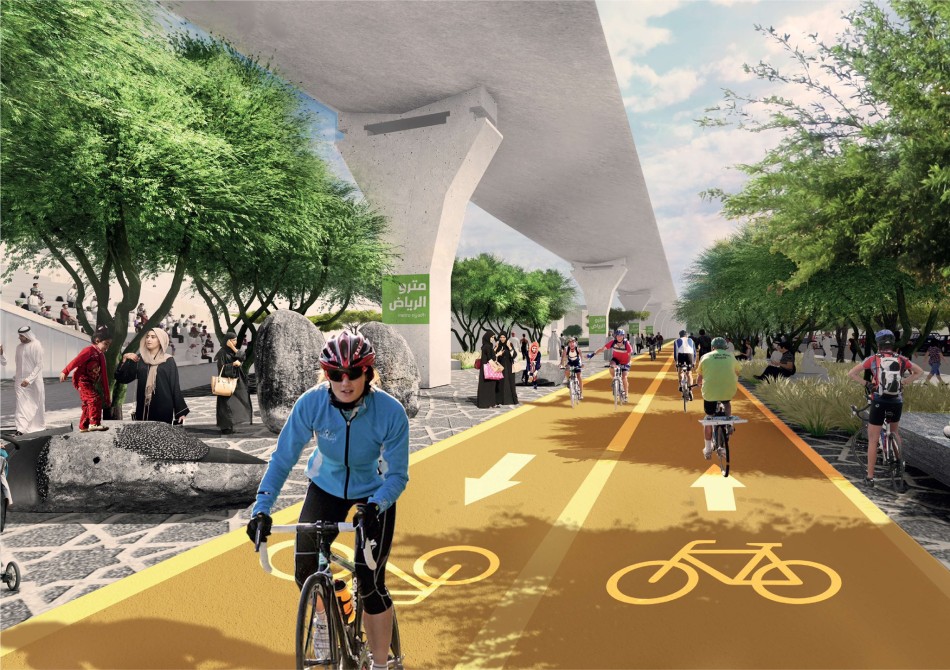
The "Sports Track" project links Wadi Hanifa, west of the city, to Wadi Al-Sulay, in its east, via Prince Mohammed bin Salman bin Abdulaziz Road, with extension areas in both valleys with a total length of 135 km, and includes bicycle paths distributed between 85 km for amateurs and 135 km For professionals, a 123 km horse track, safe wooded paths, stations and rest areas for cyclists in Wadi Hanifa and Wadi Al-Sali, which include bicycle maintenance centers, various cafes and stores to serve hikers and athletes, green spaces and open areas with an area of 3.5 million square meters, and the planting of 120,000 new trees that will be irrigated with treated water. 100 percent and a group of landmarks and artistic icons, including 10 prominent landmarks along the route.
The track includes 8 main components distributed among its different parts, including the Wadi Hanifa area, the arts area, the Wadi Al-Yassin area, the recreational area, in addition to the sports area, which will include the sports tower, which will be located next to a closed track for cycling under the ground level. The path also includes the ecological area, the Wadi Al-Sali area, and the sand dune park area. The path also contains public facilities and services, including transportation.
Perhaps the most important value of this project is the economic value, as it constitutes a great opportunity for investors, as it contains one million square meters of land available for development. The project is expected to be completed by 2027.
